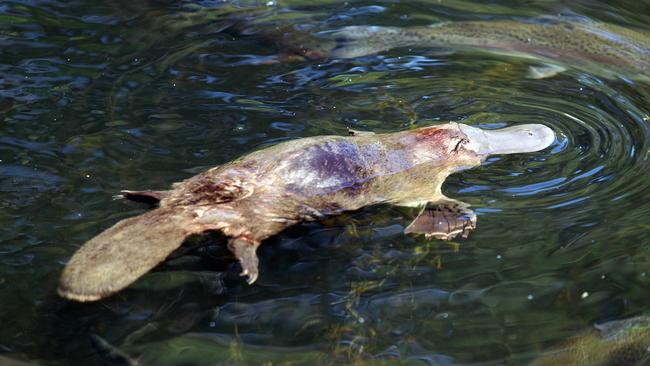The number of native animals killed under crop protection permits has been released
Crop protection permits issued in Tasmania since 2014 have allowed a staggering number of native animals to be killed, new documents show.
Tasmania
Don't miss out on the headlines from Tasmania. Followed categories will be added to My News.
SEVEN platypuses died in nets used in Tasmania’s carp eradication program under permits issued by the Department of Primary Industries, Parks, Water and Environment, documents reveal.
New Right to Information documents show more than 12,000 crop protection permits have been issued for the culling of native animals in Tasmania including galah, green rosellas, wombat and platypuses in the last 5½ years.
Released by DPIPWE, the documents detail how many permits have been granted in each region of the state for 24 different animals.
The documents show there were 12,005 permits in total granted, including 21 for galahs, 22 for green rosellas, 151 for wombats and six for platypuses.
REVEALED: SHOCK NUMBER OF WILDLIFE CULL PERMITS
The quota, or maximum number of the species able to be taken using the permit, shows as many as 21,726 black swans, 675 galahs, 681 green rosellas, 5087 wombats and six platypuses could have been culled in that time period.

A DPIPWE spokeswoman said the quota “is the number that is determined that could be taken after careful assessment so as not to threaten the sustainability of the population”.
The spokeswoman said permits to take platypus were issued to the Inland Fisheries Service to support the “vitally important carp eradication program”.
“Carp are invasive pests that, if not eradicated, will dramatically impact our freshwater ecosystems,” she said.
“These permits were issued on the basis that the netting for carp may have resulted in platypus being caught, but with the intention of releasing them from the net alive. It was acknowledged that this might not be possible and that some platypus might drown before they could be reached.
“From 2012, 15 platypus were caught during carp eradication program operations. Of these, eight were released unharmed, and seven died.”



